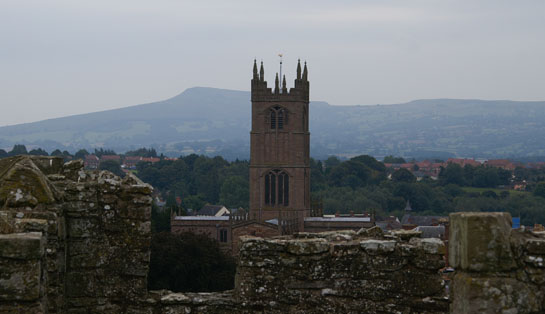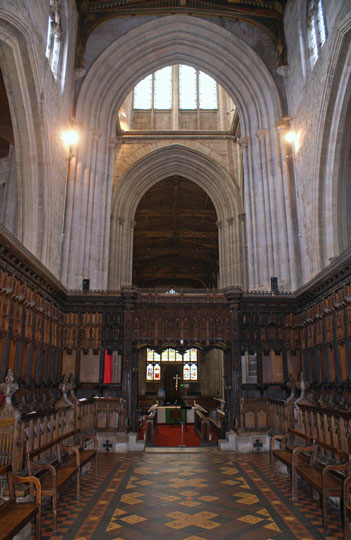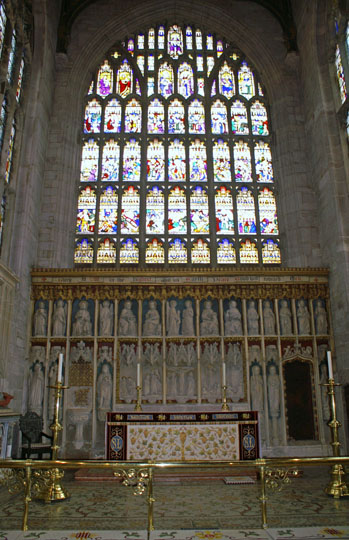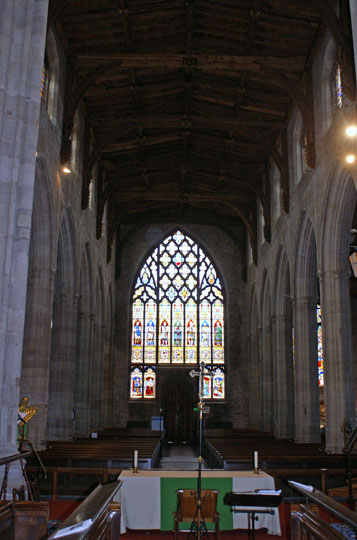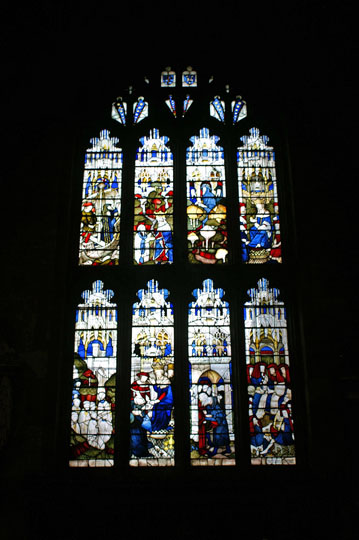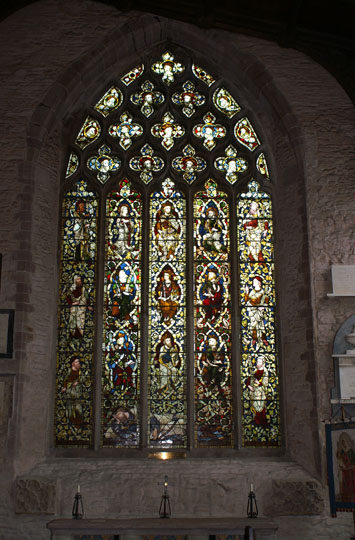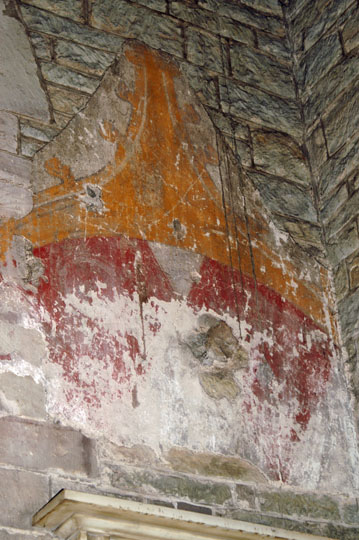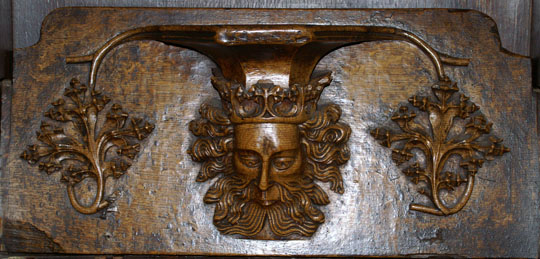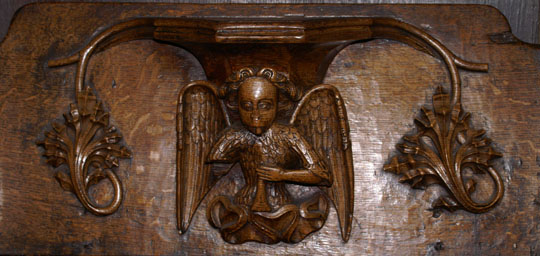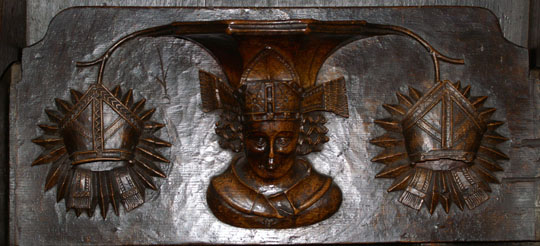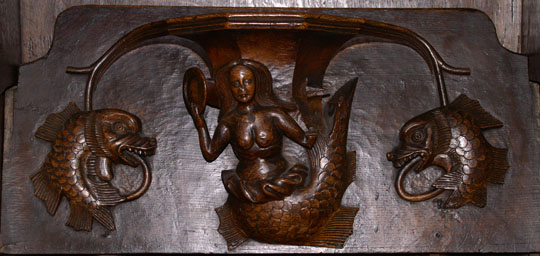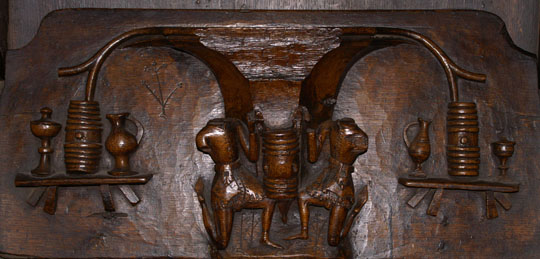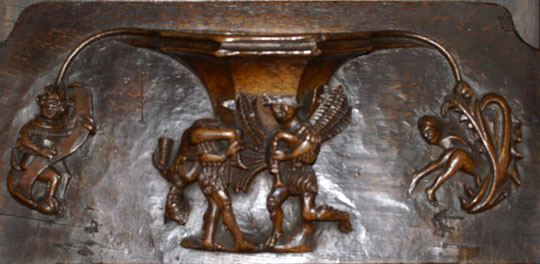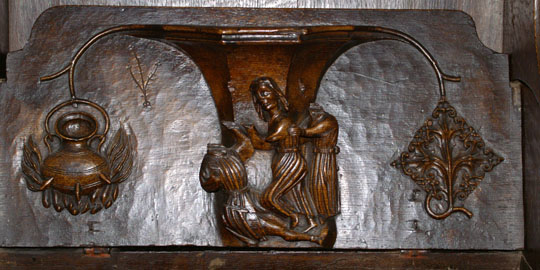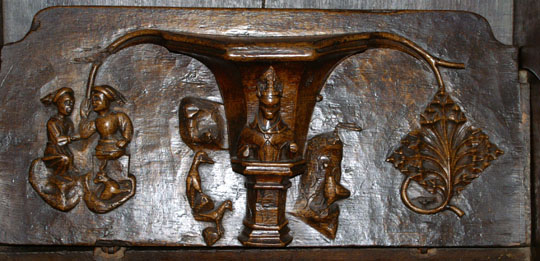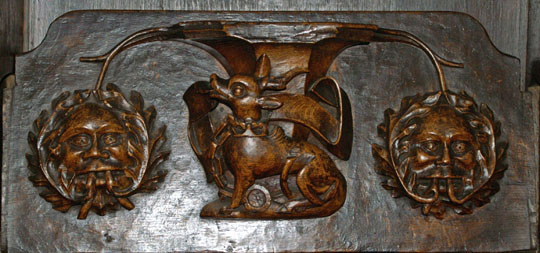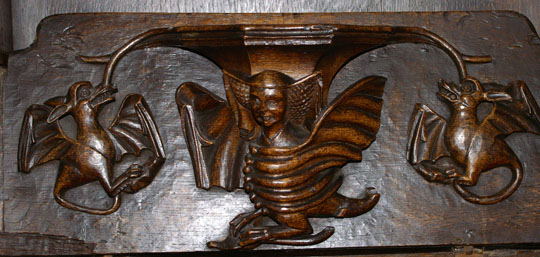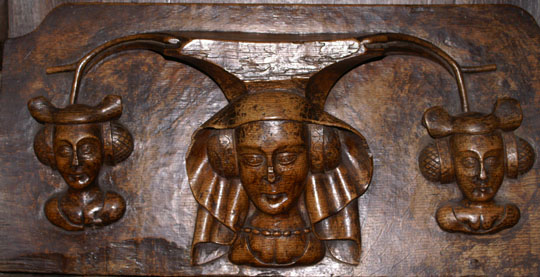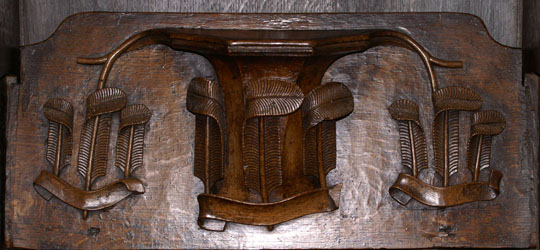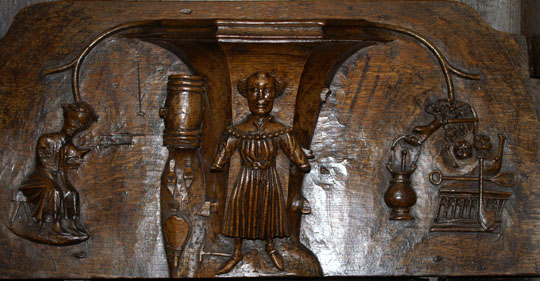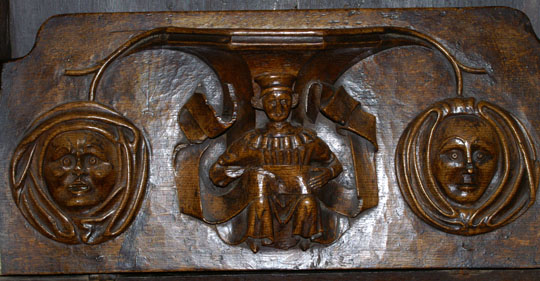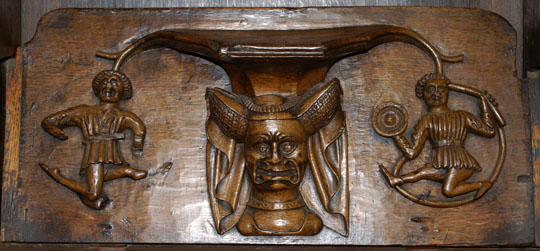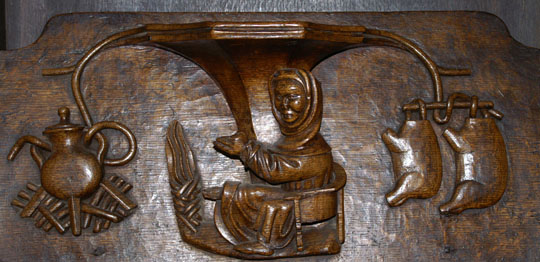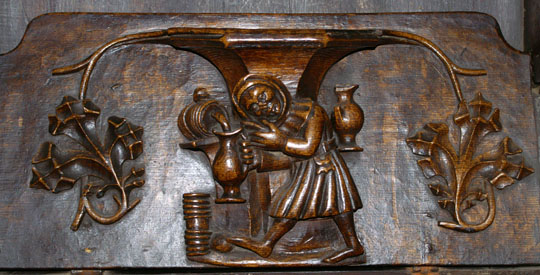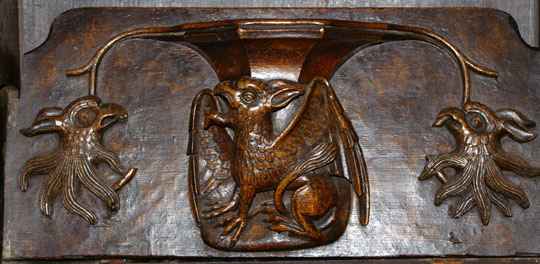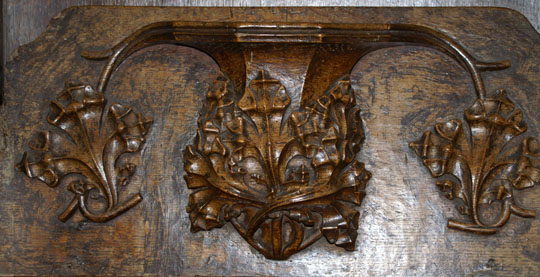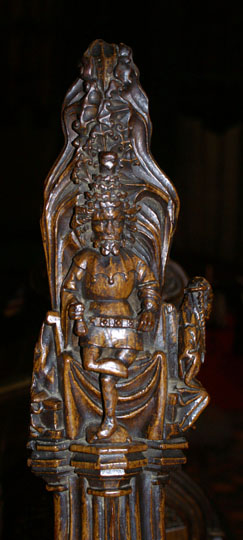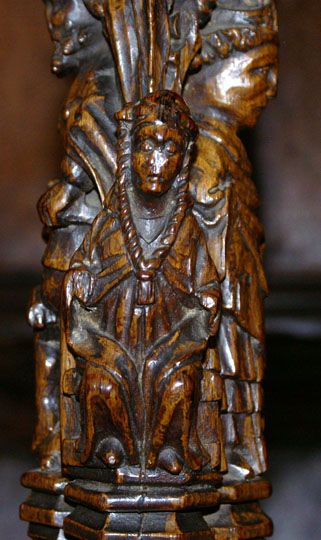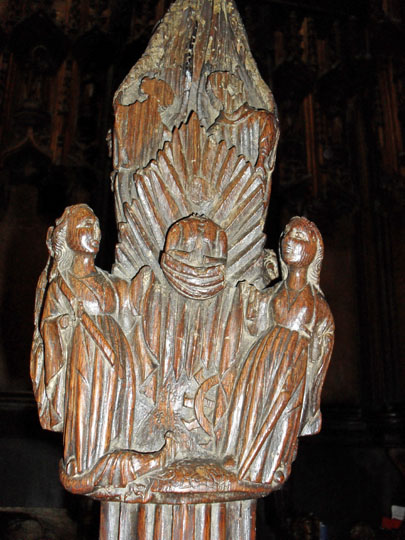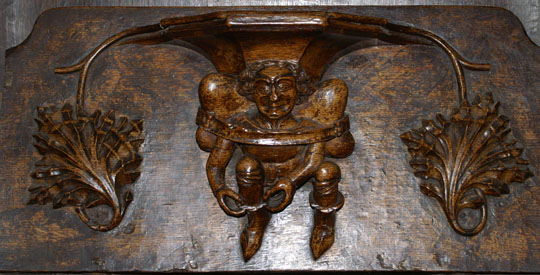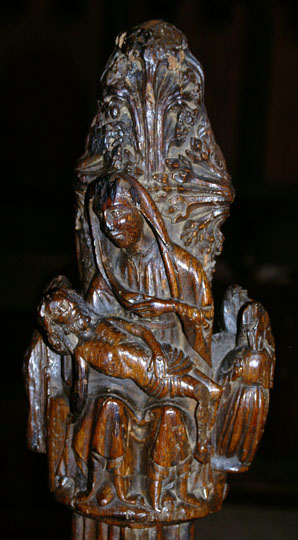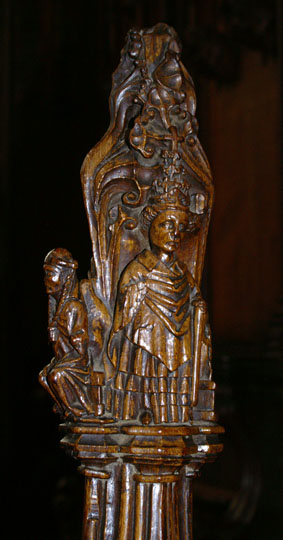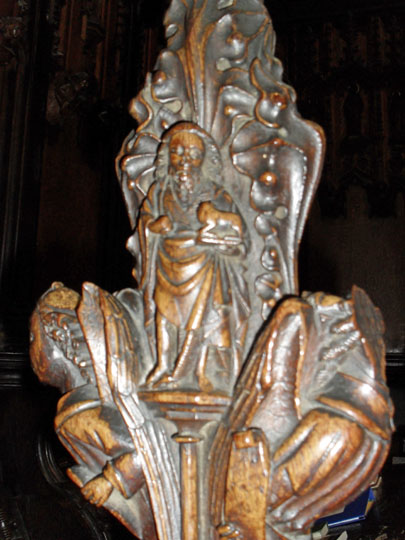|
|
||||||||||||||||||||||||||||||||||||||||||||||||||||||||||
|
Please sign my Guestbook and leave feedback |
||||||||||||||||||||||||||||||||||||||||||||||||||||||||||
|
Recent Additions |
||||||||||||||||||||||||||||||||||||||||||||||||||||||||||
|
|
||||||||||||||||||||||
|
a rebuilt north aisle. Later that century a north transept was added. The rebuilding between 1433 and 1471 was a huge undertaking. The Black Death had not spared master masons any more than it had the rest of the population and so the more straightforward Perpendicular supplanted Decorated and gave us most of the Ludlow church that we see today. It is to Ludlow’s wealthy Palmer’s Guild that Ludlow owes much of its magnificence, A palmer was someone who had made a pilgrimage to the Holy Land. The pilgrims would bring back a palm frond, recalling the strewing of palms at the feet of Christ on his entry to Jerusalem on what we now call Palm Sunday. Ludlow’s Palmer’s Guild, founded in 1284, was not unique by any means, but by acquiring mercantile interests throughout the Midlands it was a particularly rich one. The guild is commemorated in the magnificent east window. Indeed, Simon Jenkins believes Ludlow’s glass to be amongst the best in the land. Ludlow has an association with the Prince Arthur, older brother of Henry. VIII. In 1501 he married Catherine of Aragon. The following January he came to Ludlow Castle as Head of the Council of the Marches. On 2 April 1502 he died of the much-feared (and still mysterious) “sweating sickness” and his heart was buried in St Laurence’s. The marriage was believed to be unconsummated which paved the way for Henry to marry Catherine. Later, of course, he was to claim that the marriage with Arthur had been consummated, paving the way for his divorce, his marriage to Ann Boleyn and the establishment of the Church of England, How different might our history have been but for the death of the unfortunate Arthur at Ludlow? |
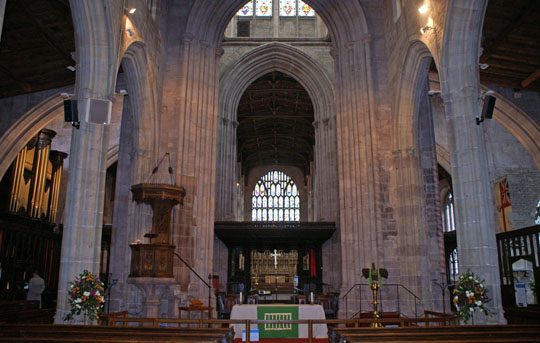 |
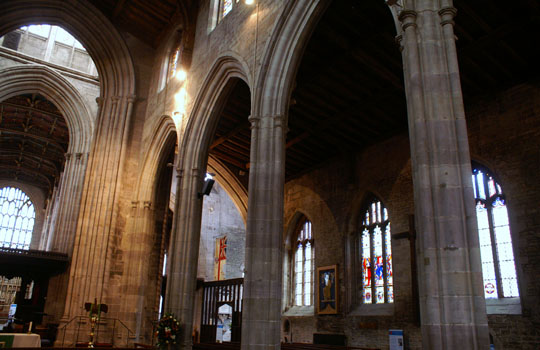 |
|
|
|
|
|
||||||||||||||||||||||||||||||||||||||||
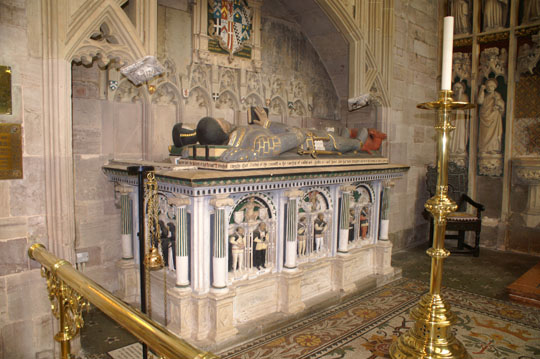 |
|||
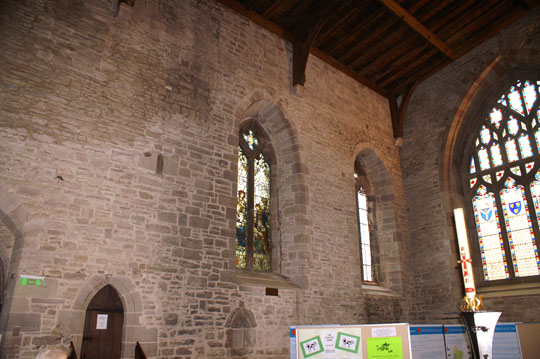 |
|||
|
|
|
|
|
||||||||||||||||||||||||||||||||||||||||
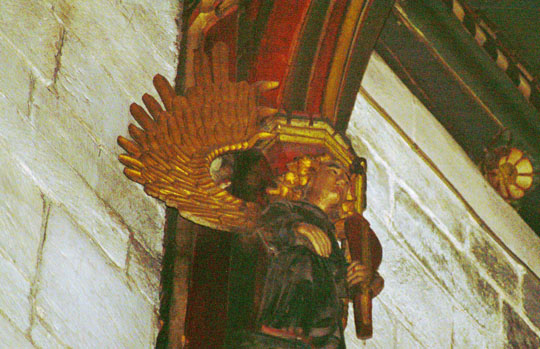 |
|||
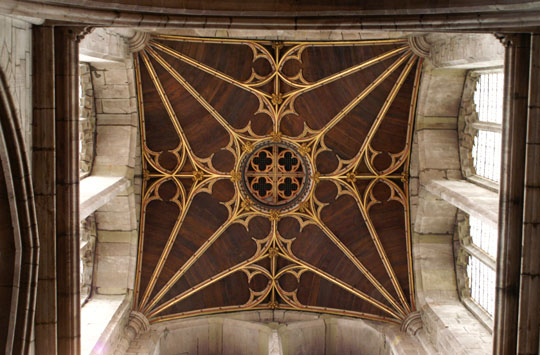 |
|||
|
|
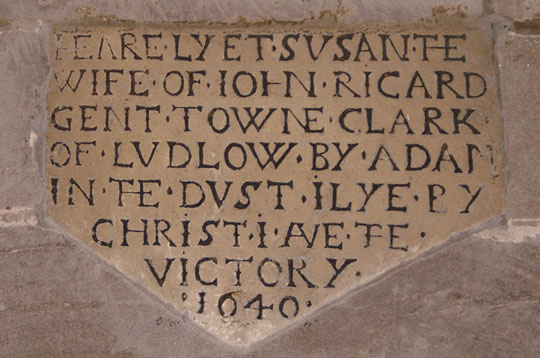 |
|||
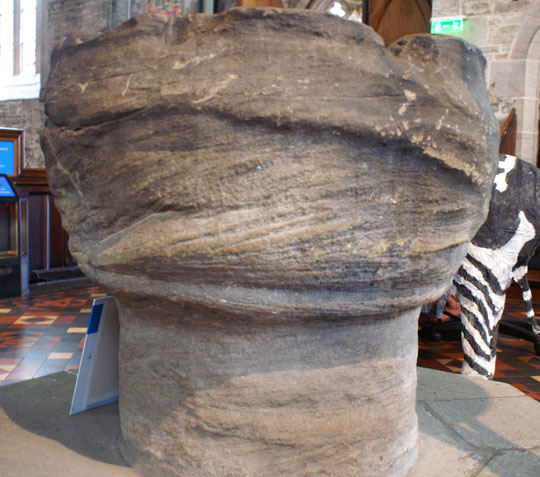 |
|||
|
|
|
Misericords and Poppy Heads |
|
The majority of the misericords date from 1447, but eight seem to date from the late c14. They have a crude “twig” device - perhaps the symbol of the carver? Many of the misericords record the Yorkist dynasty, but perhaps the most fascinating are those depicting mediaeval life. |
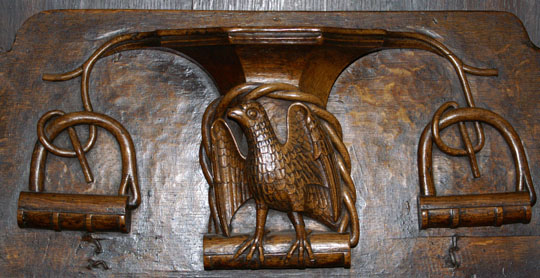 |
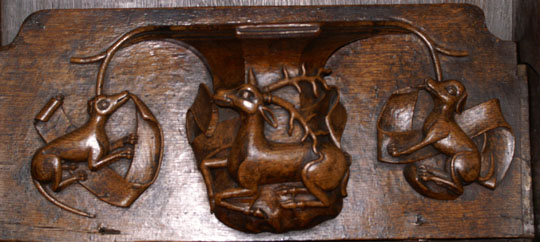 |
|
|
||||||||||||||||||||||||||||||||||||||||||||||||||||||||||||||||||||||||||||||||||||||||||||||||||||||||||||||||||||||||||||||||||||||||||||||||||||||||||||||||||||||||||||||||||||||||||||||||||||||||||||||||||||||||||||||||||||||||||||||||||||||||||||||||||||||||||||||||||||||||||||||||||||||||||||||||||||||||||||||||||||||||||||||||||||||||||||||||||||||||||||||||||||||||||||||||||||||||||||||||||||||||||||||||||||||||||||||||||||||||||||||||||||||||||||||||||||||||||||||||||||||||||||||||||||||||||||||||||||||||||||||||||||||||||||||||||||||||||||||||||||||||||||||||||||||||||||||||||||||||||||||||||||||||||||||||||||||||||||||||||||||||||||||||||||||||||||||||||||||||||||||||||||||||||||||||||||||||||||||||
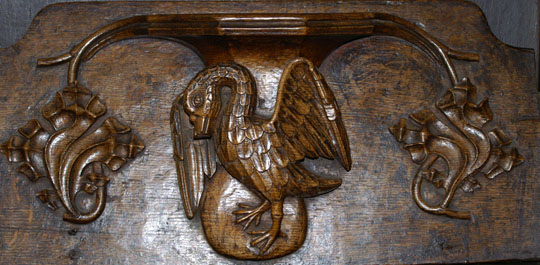 |
|||
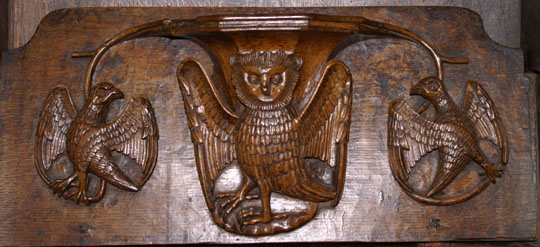 |
|||
|
|
||||||||||||||||||||||||||||||||||||||||||||||||||||||||||||||||||||||||||||||||||||||||||||||||||||||||
|
|
|
|
||||||||||||||||||||||||||||||||||||||||||||||||||||||||||||||||||||||||||||||||||||||||||||||||||||||||||||||||||||||||||||||||||||||||||||||||||||||||||||||||||||||||||
